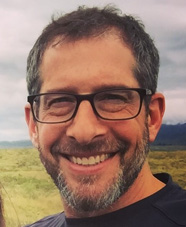
Climate change is often subtle, but when there are massive wildfires in three western states burning millions of acres, killing dozens, and producing smoke that reaches the Atlantic Ocean, people pay attention.
Also this summer, temperatures reached 100ºF in the Siberian tundra, 5 million people in Bangladesh were displaced by flooding, and planet Earth recorded its highest-ever temperature—130ºF in Death Valley. This confirms what we’ve known for some time: global warming is incontrovertible physics and chemistry, and its impacts are becoming more dire.
A 2018 report from the United Nations Intergovernmental Panel on Climate Change predicted 2.7ºF of warming by 2040 at our current rate of greenhouse gas emissions. Even with mitigation we will continue to confront two types of disruptions: unidirectional trends, like earlier changes in seasons, and high unpredictability—in dryness, precipitation, and extreme weather events. So, we must adapt the way we invest and plan to minimize the impact of climate change.
Mitigation, or reducing emissions, remains critical. But since the early 2000s, when effects of rapid climate change first became observable, adaptation has emerged as a prophylactic to the intensifying and irreversible effects of climate change. From coastal Virginia cities building on higher ground to New York City investing in reflective surfaces to plan for heat, adaptation involves incorporating climate change data into decision-making and building resilience: the ability of a community or a natural system to withstand impacts.
Last year, the Global Commission on Adaptation estimated that investing $1.7 trillion on adaptation this decade would yield more than $7 trillion in environmental and social benefits in the future. This is already underway, as a growing number of large corporations and communities of all sizes are increasingly factoring climate risk into decision-making. For example, the Southeast Florida Regional Climate Change Compact, composed of four counties, has worked since 2009 to prepare for a rising sea level, examining land use, development, water availability, and social vulnerability.
This approach to decision-making is increasingly important because the climate impacts we’re grappling with now are the consequences of our emissions 30 years ago or more. Similarly, we might not see the benefits of positive changes we make today—like more new energy vehicles—for another 30 years. Every year we wait to take climate change seriously, however, extends that timeline. We must continue reducing our emissions to glean insights about our energy systems and nature that we wouldn’t otherwise know.
Climate change is too broad of an issue for everyone not to have a role. Corporations need to take the lead in becoming more sustainable. Government needs to be responsive to science. And people need to be engaged and make responsible choices, from the cars we drive to the votes we cast.
During the pandemic, we’ve seen commuter emissions and office energy use slashed. There are good things that can happen from bad circumstances. We just need to work together and build resilience.